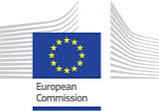Chemycal has been acquired by 3E
Learn MoreChemycal has been acquired by 3E
Learn MoreDiscover how Chemycal PRO helps you boosting your regulatory monitoring:

ABSTRACT - Tyre particles are generated by shear forces between the tread and the road or by volatilisation. Tyre abrasion (wear) contributes from one-third to half of microplastics unintentionally released into the environment. The major part ends up in the soil, a considerable amount is released into the aquatic environment, and a small percentage becomes airborne. Nevertheless, tyre abrasion contributes to 5–30% of road transport particulate matter (PM) emissions. This corresponds to approximately 5% of total ambient PM emissions. The particle mass size distribution peak at around 20 to 100 µm, with a second peak in the 2–10 µm range. A nucleation mode has been reported in some studies. The absolute abrasion levels depend on the tyre, vehicle, and road haracteristics, but also on environmental conditions and driving style. Most tyre particle emission factors in the literature are based on data prior to the year 2000. We aggregated recent studies and found a mean abrasion of 110 mg/km per vehicle or 68 mg/km/t for passenger cars (based on approximately 300 measurements). Based on a limited number of studies, the PM10 emissions were 1.4–2.2 mg/km per tyre. On the other hand, the particle number emissions were in the order of 1010 #/km per tyre. The ratio of PM10 to total abrasion was found to be 2.5% on average. Finally, the ratio of PM2.5 to PM10 was calculated to be around 40%. Various mitigation measures for tyre particle pollution could be envisaged; the most direct is the limitation of the tyre abrasion rate, as proposed by the European Commission for the Euro 7 regulation. Other regulatory initiatives are also discussed.
CONTINUE READING ON: publications.jrc.ec.europa.eu
2013 © MyChemicalMonitoring. ALL Rights Reserved. About Us | Terms and Conditions